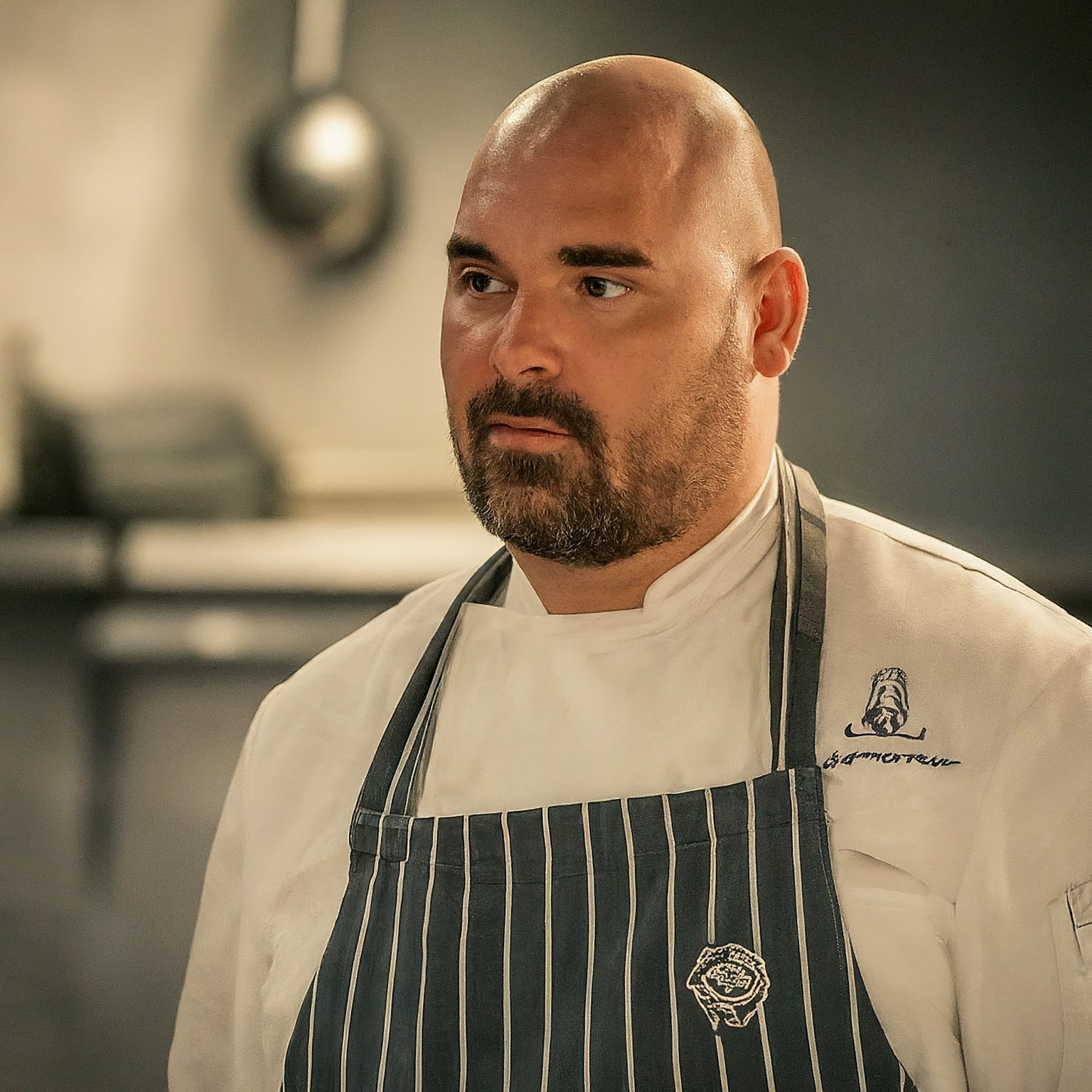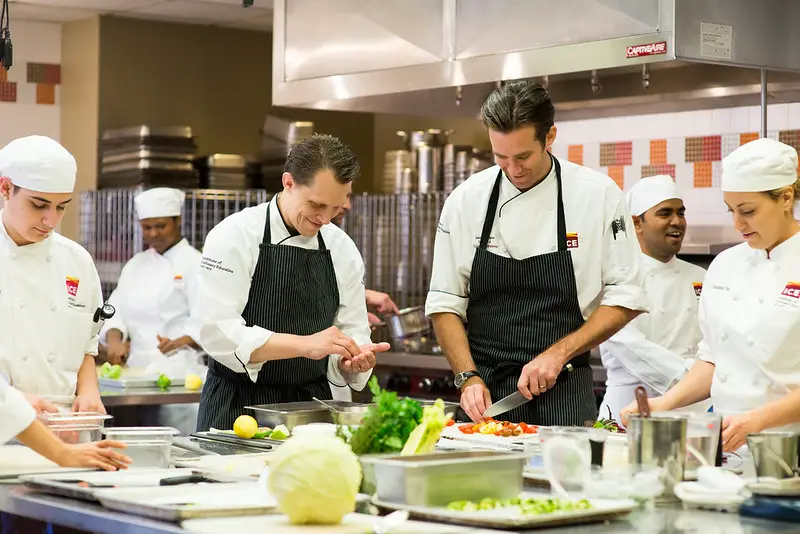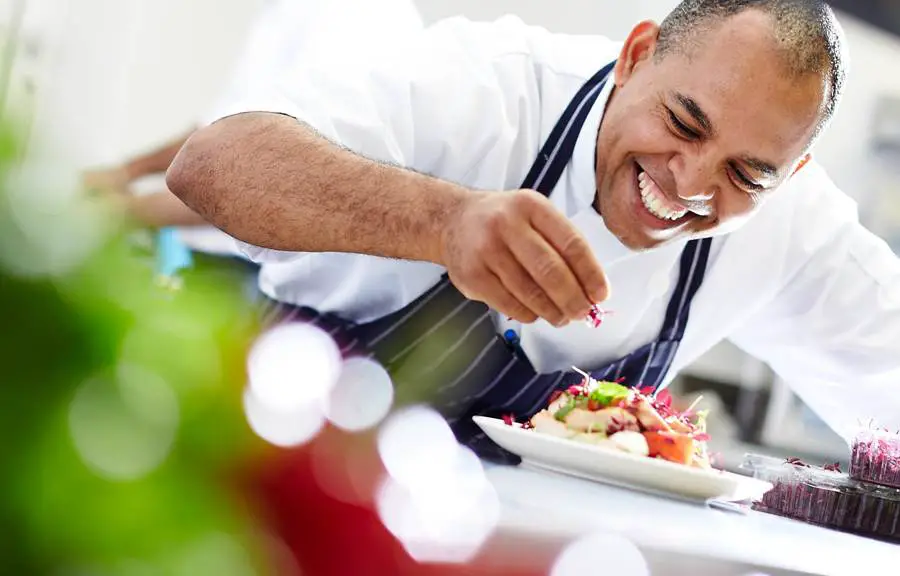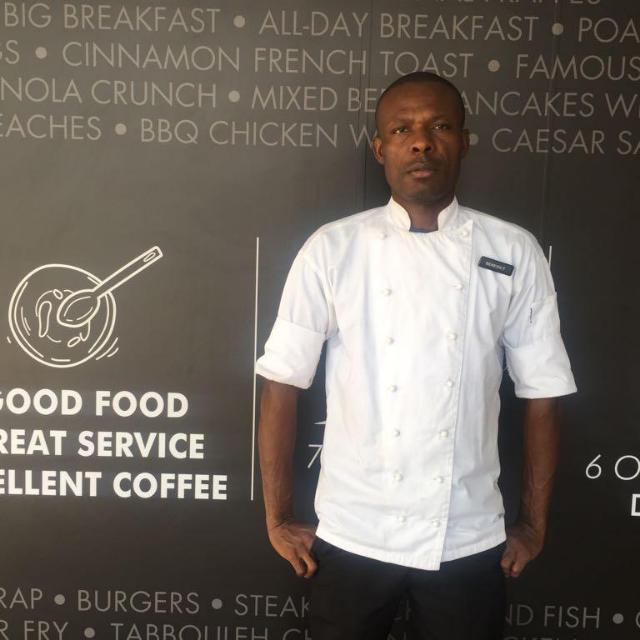
An executive chef
Executive Chef Leadership: Managing a Culinary Team
Effective leadership in the kitchen is crucial for the success of any culinary establishment. An executive chef is not just a master of culinary arts but also a leader responsible for managing and motivating a diverse team.
This article delves into the essential aspects of executive chef leadership, offering insights into managing a culinary team, key takeaways, and a table chart summarizing the core elements.
Introduction
An executive chef’s role extends far beyond cooking; it involves steering the entire kitchen team toward excellence.
From setting the tone and culture to handling conflicts and ensuring consistent quality, an executive chef must blend culinary expertise with exceptional leadership skills.
This balance is vital for maintaining a harmonious and productive kitchen environment where creativity and efficiency thrive.
Key Takeaways
- Effective Communication: Clear and concise communication is the backbone of a well-run kitchen.
- Team Building: Fostering a sense of teamwork and collaboration among staff members is essential.
- Training and Development: Continuous learning and skill development keep the team updated and motivated.
- Conflict Resolution: Addressing and resolving conflicts swiftly and fairly maintains a positive work environment.
- Leading by Example: Demonstrating high standards and a strong work ethic sets the tone for the team.
Table Chart: Key Elements of Executive Chef Leadership
| Element | Description |
|---|---|
| Effective Communication | Ensure clarity in instructions and open channels for feedback and discussion. |
| Team Building | Create a supportive and collaborative atmosphere. |
| Training and Development | Invest in continuous education and skill enhancement. |
| Conflict Resolution | Handle disputes quickly and impartially. |
| Leading by Example | Exhibit the behavior and standards expected from the team. |
Effective Communication
Effective communication is foundational to any successful kitchen. As an executive chef, it’s vital to ensure that all team members understand their roles and responsibilities. This involves:
- Clear Instructions: Providing detailed and precise instructions to avoid misunderstandings.
- Open Channels: Encouraging open communication where team members feel comfortable sharing ideas and concerns.
- Regular Meetings: Hold daily briefings to discuss the menu, special requests, and any potential challenges.
Team Building
A cohesive team can significantly enhance kitchen efficiency and morale. Team building involves:
- Collaboration: Promoting a culture where everyone works together towards common goals.
- Supportive Environment: Creating a workplace where staff feel valued and supported.
- Team Activities: Organizing team-building activities outside the kitchen to strengthen relationships.
Training and Development
Continuous training ensures that the culinary team stays updated with the latest techniques and trends. This includes:
- Skill Enhancement: Offering regular training sessions on new cooking methods and recipes.
- Career Development: Providing opportunities for team members to advance their careers within the establishment.
- Feedback and Reviews: Conducting regular performance reviews and offering constructive feedback.
Conflict Resolution
Conflicts are inevitable in any high-pressure environment like a kitchen. Effective conflict resolution involves:
- Immediate Action: Addressing issues as soon as they arise to prevent escalation.
- Fairness: Ensuring that all parties involved feel heard and that resolutions are fair and just.
- Mediation: Sometimes, acting as a mediator to facilitate constructive dialogue between conflicting parties.
Leading by Example
An executive chef sets the tone for the kitchen through their behavior and work ethic. Leading by example includes:
- Professionalism: Maintaining high standards of professionalism at all times.
- Work Ethic: Demonstrating dedication, punctuality, and a strong work ethic.
- Positive Attitude: Displaying a positive attitude, even during challenging times, to motivate the team.
Conclusion
Managing a culinary team requires a blend of strong leadership, effective communication, and a commitment to continuous development.
An executive chef’s ability to lead by example, foster a collaborative environment, and address conflicts efficiently sets the stage for a successful kitchen.
By investing in team building, training, and maintaining open lines of communication, executive chefs can ensure that their teams are motivated, skilled, and ready to deliver exceptional culinary experiences.
Key Takeaways:
- Effective Communication is essential for clarity and efficiency.
- Team Building fosters collaboration and a supportive environment.
- Training and Development keep the team skilled and motivated.
- Conflict Resolution maintains a positive and harmonious workplace.
- Leading by Example sets high standards for the team to follow.
Through these practices, executive chefs can create a productive and dynamic kitchen atmosphere that not only meets but exceeds culinary standards, ensuring customer satisfaction and long-term success for their establishment.





